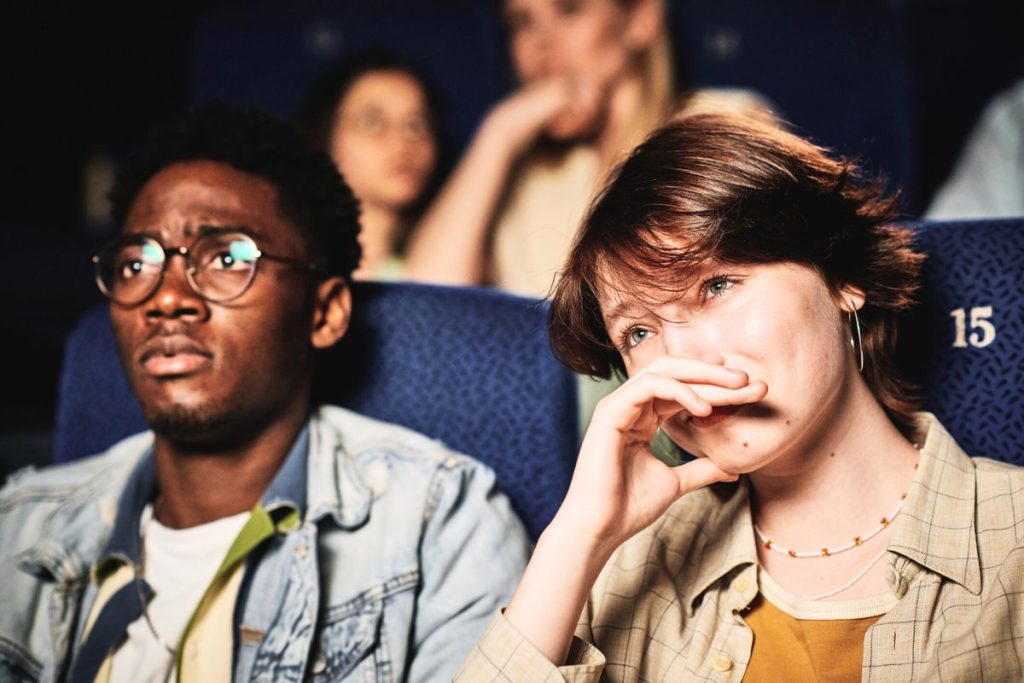If you haven’t yet heard of Adolescence, the Netflix series that’s been dominating screens since its release in March, you’re likely missing out on the latest cultural phenomenon. This British drama is making waves for much more than its gripping storyline; it’s sparking emotional reactions across audiences and deep conversations about societal issues. So, what is it about this show that’s resonating so powerfully with viewers?
A heart-wrenching portrayal of youth and masculinity
For many viewers, Adolescence hits hard on a personal level. Cécile, a mother of two from the suburbs of Paris, confessed, “By the end of the fourth episode, I was in tears.” It’s not hard to see why — the series follows 13-year-old Jamie, who finds himself at the center of a shocking crime, leading to his arrest and the unraveling of his family’s world. The show, which was shot in single continuous takes, forces you to sit with the tension and emotions in real-time, making the experience feel incredibly raw.
As Adolescence unpacks the alarming influence of men’s rights movements and online radicalization on young boys, it also shines a light on the complicated dynamics within families. For Cécile, watching the parents struggle with their own limitations and the threats their children face, “I felt like I saw myself in them — they’re not bad parents; they’re doing the best they can. This could happen to anyone.” The realism in the show touches a chord with many, especially those who recognize themselves in the helplessness of trying to protect a child from unseen dangers.
The ripple effects of toxic masculinity
One of the standout features of Adolescence is its unflinching examination of toxic masculinity. Through Jamie’s journey, the show explores the damaging ideologies perpetuated by figures like Andrew Tate, whose influence is referenced early on in the series. It’s not just about whether Jamie committed a crime; the show forces us to confront the systemic violence that leads up to it. Lucille, a 22-year-old viewer, reflects, “What’s compelling isn’t whether he did it or not, but the continuum of violence — that’s where we see the bigger picture.”
This theme speaks to many viewers, especially those concerned with how society shapes young men’s identities. “It’s a good way to educate boys,” Lucille adds. “Feminicides aren’t just something you read about; they affect everyone.”
The struggle of modern masculinity
For Emmanuel, a 32-year-old viewer, the show’s depiction of masculinity was a sobering reminder of how ingrained ideas about what it means to be a man can harm young people. “We push boys into sports, into action, into violence,” he explains. “The whole ‘boys will be boys’ mentality reinforces this dangerous narrative.” Emmanuel’s reflection touches on a key theme in the show: father-son relationships. These relationships are fraught with unspoken tension and a lack of communication, while the female characters are portrayed as more emotionally connected, more willing to talk openly.
Nadia, a fellow viewer, sees the show as a mirror of real-life struggles. “Why are boys unable to express their emotions without resorting to anger or retreating into themselves?” she asks. This sentiment is shared by many, with the show spurring deeper conversations among friends and colleagues about mental health, especially in young men.
An intergenerational divide exposed
The series also touches on a significant generational gap, especially when it comes to how the younger generation interacts with social media. “The new generation doesn’t speak the same language on these platforms,” Lou, an international law student based in London, notes. Lou points out that the show highlights how children are often treated like lesser citizens or dismissed when it comes to their reality, especially in the digital age. This is compounded by the fact that many of the older characters, including Jamie’s father (played by Stephen Graham), are completely out of touch with the complexities of their children’s lives.
Jamie’s father is portrayed as well-meaning but ultimately unable to protect his son, unable to even understand what’s happening in the next room. This disconnect between generations and the growing divide in understanding digital culture makes the show feel relevant and important for today’s parents and educators.
The power of long takes: a masterclass in cinema
What makes Adolescence truly stand out, aside from its social commentary, is its technical brilliance. The entire series is filmed in a single continuous take, with no cuts, which makes for a completely immersive experience. Méli, a film student, shared, “The filming is so immersive that you lose track of time. It feels like you’re actually a part of the story.” This approach keeps viewers engaged in a way that traditional editing doesn’t — it forces us to stay in the moment, to feel the weight of each decision, each turn of the narrative.
Director Philip Barantini orchestrates this technique flawlessly, having previously collaborated with Stephen Graham on the film The Chef, which used a similar technique. The result is a series that doesn’t just entertain; it engulfs you, leaving you with something to think about long after the credits roll.
In the end, Adolescence is more than just a story about a troubled teenager. It’s a mirror reflecting our society’s struggles with masculinity, family dynamics, and modern challenges. With its powerful performances, brilliant cinematography, and timely themes, it’s no wonder the show is hitting so hard with viewers. It’s a conversation starter, a raw exploration of the issues that affect us all.



